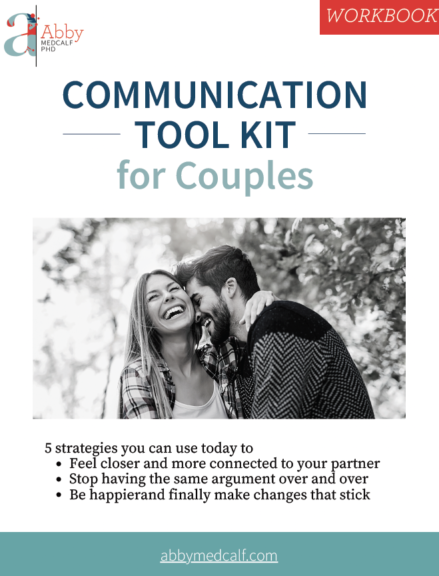
When you’re single, you get to make 100% of your decisions, from what color you paint your bedroom to how much you spend on eating out every week. But if you want to make a long-term, committed relationship work, the majority of your decisions now need to be shared because just about every decision you make affects your partner.
The problem is that decision-making in a couple often boils down to arguments that devolve into one person acquiescing or both sides thinking they’re “meeting in the middle.” In the end, no one is really happy because each person thinks they gave up more. Today we’re putting all that in the past because you’re about to learn my five steps to making happier joint decisions with your partner so you can walk away feeling like a loving team.
6-minute read
Your attachment style can have a big impact on how you like to make decisions in your relationship. Do you know what your attachment style is?
What is Consensus?
When you look up consensus in the dictionary, you find words like harmony, solidarity, and unity in the definition. It means accordance in opinion or feeling. This is important because, even if you can’t get behind the opinion or thinking of your partner, I want you to get behind their feelings. The word consensus comes from the Latin word consentio, which literally means to feel together. Too often, couples focus on the “facts” and don’t talk about the feelings involved. A love relationship needs to be, first and foremost, about feelings.
In a business, consensus decision-making is a process where two or more people agree to support a decision because it’s in the best interest of the team, group, or company. It’s a common goal they all back. Even if the outcome isn’t each individual’s favorite result, they get on board in the end.
There are a few important components that are part of consensus decision-making:
- It’s fair: everyone has equal input into the process (but not equal input into the final decision, and this is key)
- It’s collaborative: each person’s input is actively solicited and valued
- It’s cooperative: it’s not about competing for individual preferences; it’s taken on with an intention of working together and uniting.
Starting from this point of fairness, collaboration, and cooperation, you can see how any decision-making is going to be better than the usual “I win, you lose” mentality we have in our romantic relationships.
Watch my TEDx talk to Learn the Real Reason Relationships Fail.
The Five-Step Process for Making Happier Joint Decisions in Your Relationship
Step One: See Decision-Making as a Triangle
Most couples see making decisions with their partner along a straight line. You’re at one end, and your partner is at the other end, and you try to meet somewhere in the middle if you have differing viewpoints or ideas. But this ends up in a tug-of-war with two people pitted against one another.
It’s time to reframe joint decision-making not as a negotiation or a compromise but, instead, as a whole new collaborated idea.
Instead, you need to think of joint decisions as a triangle. Think of yourself and your partner as each being at one of the points at the base of the triangle, and your joint solution is actually the third point at the top of the triangle. Neither of you knows what this might be yet because you have to discuss options and ideas to get there. It’s an unknown quantity at first, and you’re working together to figure out what it is.
So set an intention to be curious. Stop thinking you’re right and, instead, truly wonder what your partner is thinking and what’s driving their thoughts and actions. You want to listen like you’re wrong! This comes down to asking yourself, “Do I want to be correct or effective?” Correct is you’re right, and you get to bulldoze through and get your agenda passed. Effective is having a connected, loving partnership. You need to choose.
Have you subscribed to my YouTube Channel yet? I’ve got tons of videos full of actionable tips and tools so you can have some quick wins and find more ease, joy, and happiness in your life and in all your relationships!
Step Two: Check Yourself
In his book Getting to Yes with Yourself (and Other Worthy Opponents), Harvard Negotiation Project cofounder, William Ury, says that the biggest hurdle we face in any negotiation isn’t our difficult partner or bad timing. Instead, he says, “We sabotage ourselves by reacting in ways that do not serve our true interests.” In other words, you get in your own way by falling into old negative patterns such as losing your temper, withdrawing, being passive-aggressive, or not holding your boundaries. This is what destroys the conversation.
Working on your self-awareness is key, of course, in the long term. In the short term, check in with yourself before you speak with your partner, and make sure you’re in a good, patient, and open place. Then be as mindful as possible throughout the conversation.
Step Three: Ask Questions Instead of Making Statements
I’ve said this one often, you can’t SAC your relationship. Don’t make Suggestions, offer Advice, or Criticize in this (or any) conversation with your partner. Instead, you’re going to be curious and ask collaborative questions with the intention of having a better understanding of what your partner wants and needs. What’s driving their thinking? What’s underneath what they’re saying they want? Try to stay away from “Why?” questions which tend to put people on the defensive. You might start with questions like:
- Can you tell me more about X?
- Can you say more about why you feel so strongly about Y?
- What do you mean by X? Can you give me another example?
- What’s something I haven’t asked that would help move this conversation forward?
A great hack is to always look for a third or fourth choice or option. What else could you both be thinking right now instead of each “side?”
Grab my list of Collaborative Questions for ways to support each other without SACing your relationship.
Step Four: Communicate Relentlessly
Don’t stop communicating. Keep going until there’s some sort of better understanding between the two of you. If this was happening at work, you wouldn’t just throw up your hands and say, “Oh well.” Keep driving towards understanding and a shared solution.
Attack the problem, not one another.
Check out my Complete Guide for Effective Communication to foster positive, effective communication in both your business and personal relationships.
Step Five: One Person Makes the Final Decision
OK, this final step is optional, but I highly recommend it. Before you start the conversation, pick one person in the couple who will be making the final decision. In the end, when everything has been listened to, argued, thought out, and responded to, it’s that one person’s ruling to make the final decision. Then, you both commit to getting 100% behind the final outcome. This means no passive-aggressive BS, no “I told you so” if it doesn’t work out. As a team, you’ve got a final decision that you both get behind.
Resources for How to Make Happier Joint Decisions with Your Partner
How Your Attachment Style Affects Your Personal Relationships
Dr. Abby Medcalf TEDx talk: The Real Reason Relationships Fail
Four Ways to Be More Self-Aware
How to Make Mindfulness a Habit
The Complete Guide to Effective Communication in Every Relationship







